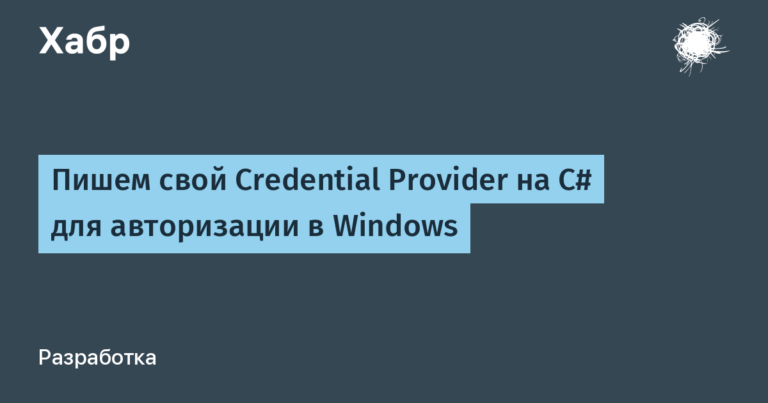new approach for fast market entry of ecom
Hello everyone! In touch OXYGEN — we are a production agency with a focus on the development and growth of e-commerce projects.
In our work, we aim to save time and development resources, and as a result, our clients' budgets. Therefore, we have created our own library of ready-made components on Bitrix for modular development of typical online stores.
Problems of developing typical online stores
One of the common dilemmas is choosing a development method for a typical store. You can start with a ready-made solution or create a project from scratch using custom development, but each approach has its limitations.
If a business is just starting out, it is easiest to start with a ready-made solution with minimal design modifications. If the business is already large, it has the resources, time, and most importantly, the requirements that only custom development can satisfy.
But at the early stage of e-commerce development, a business needs a standard online store with a set of familiar and user-friendly solutions.
A typical online store is an online trading platform that has the capabilities and functionality sufficient for sites in its niche.
That is, it is a fully functional online store that is in no way inferior to its competitors and takes into account the best UX solutions in the industry. At the same time, it can have an individual design, but the logic of work, frontend and backend will be standard.
Here it is worth considering that for most niches and businesses, a typical online store covers up to 80% of the tasks required to launch e-commerce. And custom development from scratch is important only for non-standard projects with a non-standard interface or business logic.
It is important to understand that not every business can afford custom development or it is not practical in principle. And saving on quality by using cheaper developers is very risky. As a rule, maintaining and developing such a site will be much more expensive than one that was initially assembled according to certain standards with code quality assessment.
For such cases, we have developed ready-made components of the typical functionality of an online store. They already have UX developed in accordance with best practices and our experience, layout and backend. With their help, you can speed up and simplify the development process.
The principle of modular development
We have noticed that in typical projects, most stages of the user journey are repeated, as are business requirements. That is, for example, checkout, shopping cart, catalog, and product card always have a similar interface and functionality, and neither business nor users need more.
And it is on typical projects that “best practices” work well — time-tested solutions that increase the convenience of the project. Therefore, on their basis, we created ready-made components for modular development.
Modular development is the creation of online stores using a library of ready-made components, each of which performs a specific function.

The online store is assembled from separate large blocks and combines the advantages of launching on ready-made solutions and custom development.
There is no need to start all the work from scratch;
Time to Market is shortened;
The specifics of the niche and business requirements are taken into account;
It costs much less than custom development;
The level of quality and opportunities for development are significantly higher than those of ready-made solutions.
Component-based development is a compromise solution for small and medium businesses. There is only one limitation: the method is only suitable for typical online stores.
How Components Work
A component is an independent complete functionality of an online store. For example: “Catalog”, “Cart”, “Checkout”, “Product card” and others.

At the same time, each component has its own user settings, and their functionality can be expanded depending on the tasks.
Thus, if there is such a need, then in each component the frontend and backend can be improved. Or you can only change the fonts and change the colors of the interface elements – depending on the task and business requirements.
Components is a highly specialized solution for online stores.
It follows that there is no extra code and design templates inside, as in ready-made solutions from ASPRO or similar ones, which immediately removes many possible problems in the future, when it will be necessary to implement new functionality or develop the current one.
At the same time, the solution is quite flexible and will allow for individualization of the design and the possibility of subsequent growth. In essence, this is a solution for those who require high quality of execution, but custom development is expensive and impractical, and the business processes are relatively typical.
Use cases
The big advantage of ready-made components is that they can be used to create a project from scratch or to refine an existing one.
Development options on components:
We are starting a new project from scratch
This is the easiest and fastest option. All you need to do is install ready-made components, personalize the main page if desired, and style the interface of ready-made components to match the overall design concept.
We integrate one of the components
Components can be embedded locally. For example, there is a ready-made website with its own design and logic, the client is satisfied with everything, but wants to replace the checkout according to UX requirements.
That is, if you need a new online store, you can launch it entirely on ready-made components from the very beginning or using them partially. In this case, the quality of development will be almost at the level of custom development, and the terms and budgets are significantly lower.
And if you already have a working project on Bitrix, you can refine it by embedding ready-made components. In this case, the visual of the components will be stylized to match your current design.
How to launch quickly and without sacrificing quality
The goal of creating a component library is to find a compromise between customization, launch time, quality and cost of work.
Therefore, we believe that the best option for a typical online store is to launch an MVP on components with subsequent refinement to meet the requirements of the business and users.

Before starting a project, you can't know with absolute certainty what users need. That's why the best UX is always the one that was determined during the process using analytics, online surveys, tests, and research.
That’s why we first launch an MVP, collect and analyze data, then formulate and test hypotheses, and then implement the best solutions in the product.
Lean manufacturing principles:
Don't invest a lot of time and money into launching heavy solutions. We launch small implementations and see how users react.
Create variations for testing. That is, we let users decide for themselves what is convenient for them, and do not impose our vision.
Change and adapt solutions. The optimization process never stops, so the site can always be made more convenient and functional.
This approach allows us to reduce the risk of implementing inappropriate solutions, quickly respond to new market or niche requirements, improve the quality of user experience, and keep up with competitors.
Thanks to this approach, we have raised conversion rate of 97% for one of the leading clothing brands – Zolla.

What are the advantages for the customer?
Minimizing risks. The components have been repeatedly tested and verified on existing projects, which allows us to significantly reduce development risks: missed deadlines, failure to fulfill obligations, and problems with functionality.
Reducing the development budget. The bottleneck in website development is specialists and their working time. The larger the project, the more labor costs of various types of specialists are required, which increases the development budget.
Easy scaling and development of the project. The business is developing, which means that the requirements for the site are also growing, so the architecture of the components is adapted for qualitative and quantitative growth.
Time to Market abbreviation. In e-commerce, project launch times are a critical indicator. Thanks to modular development, we can launch MVPs several times faster, while avoiding costly custom development and the disadvantages of ready-made solutions.
After launching the MVP, the project can be easily modified to meet individual business requirements.
Time is money: let's count the benefits
Let's use our agency as an example to calculate how profitable development on ready-made components can be.
Given:
budget and timeframe are limited;
Most of the stages of the user journey are typical;
it is important to lay the groundwork for the growth and development of the project;
the quality of the frontend and backend, as well as performance, must not be below a certain level;
In the long term, a fairly high degree of individualization for business processes is required.

Let's compare the options:
Ready-made solutions. From 350 thousand and from 1.5 months for deployment. Not suitable due to “heavy” code, limitations on development capabilities, given that revision will still be needed.
Custom development. Approximately from 3.5 million rubles and from 6 months of work, which is relatively long and expensive. Often, at the start of a typical project, a business does not have thoughtful requirements for personalization in both design and functionality, or they are subjective.
Development using ready-made functionality. From 1.5 million rubles and from 3 months. Suitable if you need a quick launch, personal design is important, the development time and budget are limited, and the project has standard functionality.
Total: If you need a typical online store, then the savings will amount to 2.5 million rubles And will shorten the term online store development 2 times without loss of quality. |





